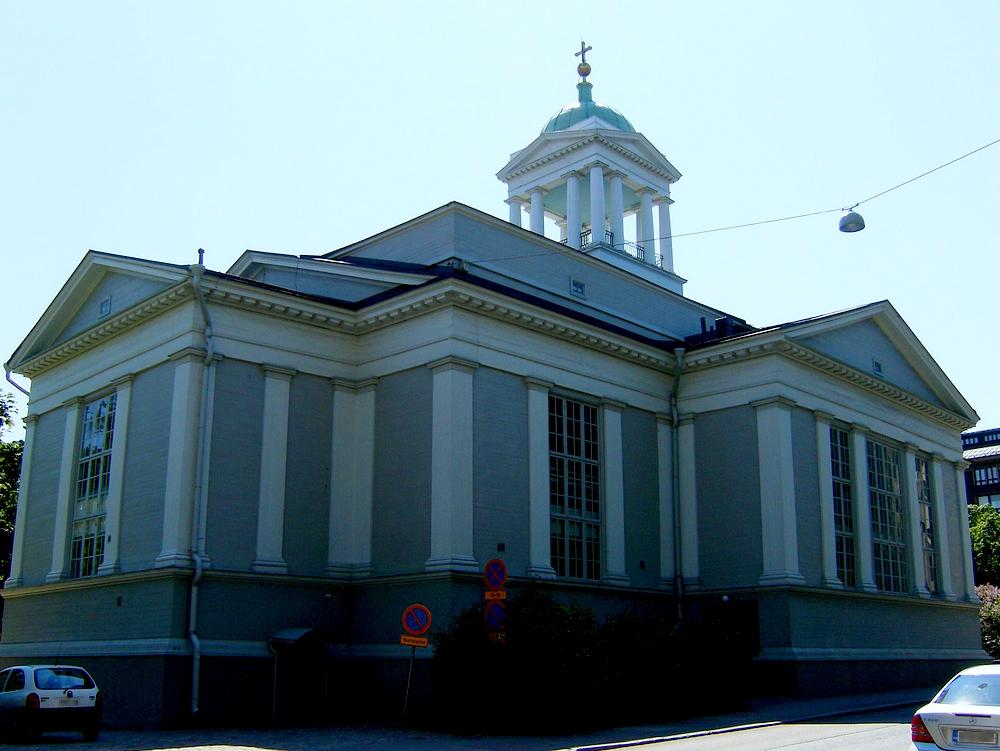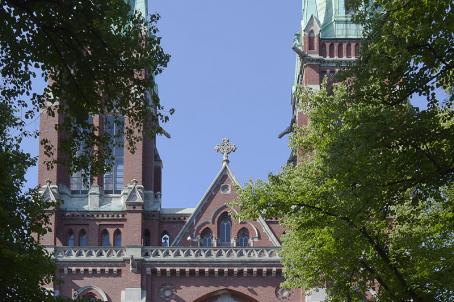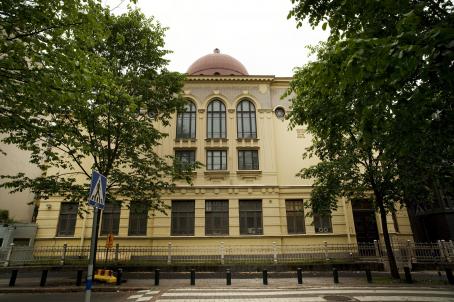Old Church

The Old Church of Helsinki is the oldest church in Helsinki city centre, completed in 1826 by the architect Carl Ludvig Engel. The Old Church was originally intended only as a temporary solution when the 18th century Ulrika Eleonora Church, which was replaced by Helsinki Cathedral, was demolished to make way for the Senate square. Due to the temporary character, the old church was built of wood and without bells. The Old Church is surrounded by the Old Church Park, which was a former cemetery.





